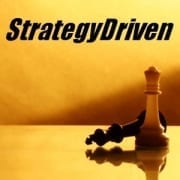How HR Can Drive Organizational Culture
Organizational culture is the heartbeat of any company. It’s the balanced mix of values, beliefs, and behaviors that shape how employees interact, make decisions, and ultimately, achieve goals. But how can human resources (HR) play a pivotal role in shaping and nurturing this vital aspect of a company?
Let’s explore how HR can be a key driver of a positive and productive organizational culture.
Understanding Organizational Culture
Organizational culture refers to the shared values, beliefs, and behaviors that guide how employees within a company work together. It influences everything from decision-making to how employees communicate with each other. A positive organizational culture fosters collaboration, job satisfaction, and loyalty, while a negative culture can lead to disengagement and high turnover.
Culture is often described as the “personality” of a company, and HR plays a critical role in shaping that personality. HR is involved in creating policies and initiatives that align with the company’s values and vision, ensuring that employees understand and embrace those principles. For example, if an organization values innovation, HR might create programs that encourage creativity and reward new ideas. By actively participating in the development and promotion of a positive culture, HR helps create an environment where employees feel valued and motivated.
The Role of HR in Building Culture
HR is at the heart of creating and sustaining a positive organizational culture. From recruitment to performance management, HR is responsible for crafting the experiences that contribute to a healthy workplace. One of the ways it accomplishes this is by using various tools for human resources that support various aspects of employee engagement, communication, and development. These tools can include platforms for employee surveys, performance tracking systems, and communication tools that keep teams connected and informed.
By using these tools, HR can gather data on employee satisfaction, identify areas of concern, and implement solutions that help maintain a strong organizational culture. For example, HR can track engagement metrics and adjust strategies based on employee feedback, creating a culture that adapts to the needs of its workforce. These efforts help to create a workplace where employees feel supported and aligned with the company’s values.
Recruiting for Cultural Fit
One of the most effective ways HR can drive organizational culture is through the recruitment process. Hiring individuals who not only have the right skills but also align with the company’s values and culture is critical to building a cohesive team. When recruiting, HR should assess a candidate’s ability to thrive within the existing work environment, rather than focusing solely on technical qualifications.
During interviews, HR can ask questions that reveal a candidate’s work ethic, communication style, and values. For example, questions about how candidates handle collaboration or deal with challenges can provide insight into how well they’ll fit into the company’s culture. Selecting candidates who share the company’s core values helps create a team that is more likely to contribute positively to the overall work environment.
Onboarding and Orientation
How new employees are welcomed and integrated into the organization significantly impacts their overall experience and long-term engagement. HR has the responsibility to create onboarding programs that not only cover the basics of job roles and responsibilities but also introduce new hires to the company’s mission, values, and expectations.
A comprehensive onboarding program that focuses on culture helps new employees feel connected to the organization from the beginning. This can include orientations that introduce them to key team members, explain the company’s approach to collaboration, and provide insight into the company’s goals. By embedding cultural values into the onboarding process, HR helps new hires understand their role in maintaining and contributing to the workplace environment.
Employee Engagement and Retention
When employees feel connected to the company’s values and see how their work contributes to its success, they are more likely to stay committed to the organization. HR plays a significant role in driving engagement by creating opportunities for employees to voice their opinions, share feedback, and contribute to the company’s growth.
Regular employee surveys, feedback sessions, and open communication channels are just some of the ways HR can measure engagement and identify areas for improvement. By actively listening to employees and addressing their concerns, HR helps foster a culture of openness and transparency. This, in turn, reduces turnover and helps retain top talent.
Performance Management
HR plays a central role in performance management, which directly impacts organizational culture. By setting clear expectations and providing regular feedback, HR helps employees understand how their work contributes to the company’s goals. A performance management system that aligns with the company’s values encourages employees to work in ways that support the overall mission.
HR can create performance reviews that recognize not only an employee’s accomplishments but also their contributions to the company’s culture. For example, rewarding teamwork, creativity, or leadership in line with the company’s values reinforces the importance of those behaviors. This approach helps build a culture where employees feel valued for both their work and how they contribute to the workplace environment.
Conflict Resolution
Conflict in the workplace is inevitable, but how it’s managed can greatly influence the overall culture. HR has a vital role in resolving conflicts fairly and efficiently, preventing disputes from negatively affecting the work environment. By providing clear guidelines for conflict resolution and training employees in effective communication, HR helps maintain a respectful and collaborative workplace.
Addressing conflicts as soon as they arise, and handling them in a way that respects all parties involved, fosters a culture of trust and mutual respect. HR’s role in conflict resolution ensures that issues are handled professionally, keeping the workplace positive and focused on collaboration rather than discord.
Diversity and Inclusion
A strong organizational culture values diversity and inclusion. HR is responsible for driving diversity initiatives that create a more inclusive workplace. This can include implementing hiring practices that seek diverse candidates, offering training on unconscious bias, and fostering an environment where all employees feel valued, regardless of their background.
Promoting diversity not only improves the workplace environment but also contributes to better decision-making and problem-solving by incorporating a variety of perspectives. HR’s commitment to creating a diverse and inclusive culture helps ensure that all employees feel like they belong, which boosts morale and retention.
Recognizing and Rewarding Contributions
Recognition is a key part of fostering a positive culture. HR can develop programs that reward employees for their contributions to both the company’s success and its cultural goals. Whether through formal recognition programs or informal acknowledgments, showing appreciation for employees’ efforts helps build a culture of positivity and motivation.
Recognition doesn’t always have to be monetary. Simple acts like verbal praise during meetings or written acknowledgments in company-wide emails can make employees feel appreciated and valued. By promoting a culture of recognition, HR helps boost employee morale and engagement.
In a nutshell, HR professionals are the architects of organizational culture. Their ability to create a positive and inclusive environment can significantly impact employee satisfaction, productivity, and overall business success. By understanding the importance of culture and implementing effective strategies, HR can create a workplace where employees feel valued, motivated, and empowered to contribute their best.













Leave a Reply
Want to join the discussion?Feel free to contribute!